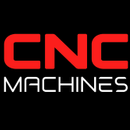Exploring the Different Types of CNC Machines in the Aerospace Industry

Exploring the Different Types of CNC Machines in the Aerospace Industry
The aerospace industry is a highly demanding field that requires precision, reliability, and innovation in manufacturing processes. CNC (Computer Numerical Control) machines play a crucial role in the production of aerospace components, enabling manufacturers to meet stringent quality standards and complex design specifications. This article explores the various types of CNC machines used in the aerospace sector, detailing the parts they produce and the machining processes involved.
Types of CNC Machines Used in Aerospace
1. CNC Milling Machines
Description: CNC milling machines are widely used in the aerospace industry for their ability to create complex geometries and intricate features. They use rotary cutting tools to remove material from a workpiece.
Parts Produced:
- Airframe Components: Fuselages, wing sections, and bulkheads.
- Engine Components: Housings, brackets, and various structural parts.
Machining Process:
- The workpiece is secured on a table and rotated against a cutting tool.
- Multi-axis CNC mills allow for intricate designs by moving the tool in multiple directions, producing precise contours and surfaces.
2. CNC Lathes
Description: CNC lathes are designed for turning operations, where material is removed from a rotating workpiece. This method is ideal for producing cylindrical parts.
Parts Produced:
- Shafts: Used in engines and landing gear.
- Spindles and Bushings: Essential components in various assemblies.
Machining Process:
- The workpiece is mounted on a spindle and rotated while a cutting tool removes material.
- CNC lathes can create complex shapes, including threads and grooves, and are often equipped with live tooling for additional capabilities.
3. CNC Water Jet Cutters
Description: Water jet cutters utilize high-pressure water mixed with abrasives to cut through materials without generating heat, making them suitable for sensitive materials.
Parts Produced:
- Composite Materials: Cutting intricate shapes in materials like carbon fiber or Kevlar for structural components.
- Sheet Metal Parts: Used in fuselage and wing designs.
Machining Process:
- A jet of water at extremely high pressure is directed at the material, effectively slicing through it.
- The process produces minimal kerf (the width of the cut), allowing for precise and clean edges.
4. CNC Laser Cutters
Description: Laser cutters use focused beams of light to cut or engrave materials with exceptional accuracy.
Parts Produced:
- Panel Structures: Precise cuts for interior components of aircraft.
- Lightweight Frames: Essential for reducing weight while maintaining strength.
Machining Process:
- The laser beam is directed by CNC software to cut through materials.
- Ideal for materials such as aluminum, steel, and composites, providing smooth and burr-free edges.
5. CNC EDM (Electrical Discharge Machining)
Description: EDM is a specialized machining process that uses electrical discharges (sparks) to remove material. This method is particularly useful for hard metals.
Parts Produced:
- Complex Shapes: Ideal for intricate components, such as tooling and dies used in aerospace manufacturing.
- Molds: Used for shaping various aerospace components.
Machining Process:
- The workpiece is submerged in a dielectric fluid, and an electrode creates electrical sparks that erode the material.
- CNC EDM allows for high precision and is used for producing complex geometries that would be difficult to achieve with traditional machining.
Conclusion
CNC machines are integral to the aerospace industry, enabling manufacturers to produce high-precision components that meet the rigorous demands of aviation and aerospace applications. From CNC milling and lathes to water jet cutters and laser machines, each type of CNC machine serves a specific purpose in the production of critical parts. By utilizing advanced CNC technology, aerospace manufacturers can enhance efficiency, reduce lead times, and ensure the highest quality standards in their operations. As the industry continues to evolve, the role of CNC machining will remain vital in driving innovation and maintaining competitiveness in the global market.


